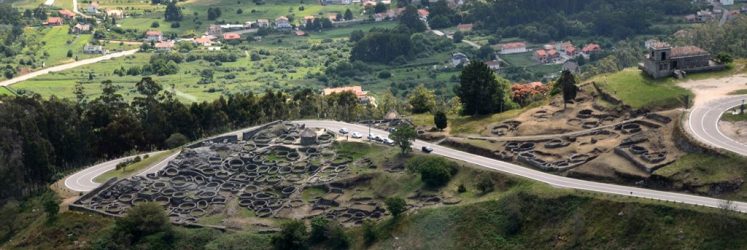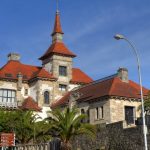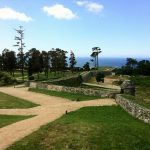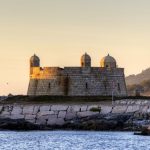titulo
INTRODUCTION
With just an area of barely 20,5 kilometres, A Guarda shows a rich and varied heritage, as built as intangible, a part of which stands out as Bien de Interés Cultural (declaration the protected historic heritage in Spain).
The Citania (village) of Santa Trega, partly dug, is the reference point of the Castrexo Culture in the Northwest of the Iberian Peninsula, the 17th century Castle (as stronghold) of Santa Cruz, is part of the cross-border network of fortifications erected in the both (Spain & Portugal) Miño river banks, during the Independence War of Portugal. Complements the defensive system the Atalaia (watchtower), currently rebuilt at the port, and the remains of the medieval wall that still kept in their original location.
The religious heritage includes from the small hermitages such as Santa Trega, la Guía, San Cayetano or the Mercedes, the three parish churches, – Salcidos, A Guarda and Camposancos -, and the ancient convent of San Benito, a two-star hotel nowadays. The crosses and “cruceiros” (stone crosses) like the San Francisco, on one side of the Santa Trega hermitage, the Cruceiro Pinto with a “peto das ánimas” (a kind of money box, for the souls), in Salcidos, and the monumental Via Crucis near to the top of the mountain of Santa Trega, are the most significant examples.
The “salinas” (saltern ponds), all of the shellfish cetareas (hatcheries), the pottery kilns in Salcidos or the ruins of the windmills are the traces of some labours historically developed in the town.
The Network of Museums of A Guarda, which consists of the MASAT (Archeological Museum of Santa Trega), the Interpretation Center of the Castle (fortress) of Santa Cruz and the Museum for the Sea, conserves and spreads part of the richness of the historical and ethnographic heritage of the town and surroundings.
As well as the built heritage, we shouldn’t forget the importance of the intangible cultural heritage, which in spite of being non-physical is not less important: the “romerias” (family lunch in the countryside), the private language of the Cabaqueiros from Salcidos, or the hundred-year-old tradition of Voto, that is rooted in the calamities of Early Middle Ages.
Conscious about the importance and the riches of all this heritage, A Guarda and the neighbouring Portuguese town Caminha, work together to achieve the mention as UNESCO’s Cultural Landscape.












